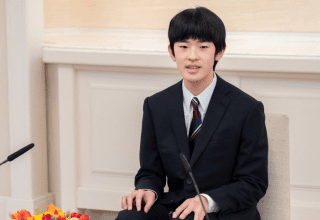
Children’s interactions with the world have been drastically changed by the emergence of social media, but it has also brought fresh hazards. From cyberbullying to online predators, the risks of unbridled internet environments have grown to be a major cause of worry. The Australian government has responded to these mounting concerns by putting out a plan prohibiting children under the age of sixteen from using popular social networking sites including X (previously Twitter), TikTok, Facebook, and Instagram. Although the proposal is politically appealing, it begs serious issues regarding how such a ban would be carried out and whether it will sufficiently solve the problems experienced by young people of today.
Politically, the idea put up by the government has attracted general support across party lines. The opposing party has said that, should they have prevailed in the forthcoming elections, they would have followed a similar approach, implying that there is general agreement on the necessity to reduce the dangers connected with social media for youngsters. Furthermore supported by all eight Australian states and territories are the leaders themselves. One exception is Tasmania, the smallest state, which has stated it would rather set the minimum age at 14 than 16. Notwithstanding this little dispute, the proposal has generally political backing.
Though on the surface the program seems simple and efficient, experts in child welfare and technology have expressed major concerns regarding its execution. More than 140 experts in these disciplines have signed an open letter to Prime Minister Anthony Albanese asking the government to review the age limit, which they contend is overly wide and not the most efficient weapon for shielding children from online harm.
Dealing with Online Harm: The Demand for a Holistic Approach
Many saw the government’s suggested fix as an attempt to solve a real issue: the growing threats kids run across online. From exposure to explicit material to the emergence of online predators and damaging false information, social media channels have evolved into a haven for digital dangers. But the idea to limit youngsters’s access to social media begs some serious concerns: How can we respect young people’s rights to engage in the digital environment while safeguarding them? And how best to stop damage without so restricting the chances social media presents?
The primary issue of this argument is how best to safeguard children in a society where digital technology is progressively influencing everything. The government’s 16-year age limit proposal stems from the belief that younger youngsters are not psychologically or emotionally ready to manage the hazards of social media. However, as professionals note, merely enforcing an age limit might not be sufficient to protect youngsters. They contend that the emphasis should be on teaching young people about internet safety, helping those who are at risk, and creating more complex policies to handle the particular hazards they encounter.
Leo Puglisi: An Interpretive Viewpoint on the Problem from Youth
Leo Puglisi, a 17-year-old student and creator of 6 News Australia, is one of the main voices of opposition even if the Australian government’s strategy mostly concentrates on safeguarding minors. Puglisi is well-known for his work as a young entrepreneur and media personality; his experience as a digital native shapes his view on social media. Puglisi contends that legislators—who did not go through the digital age in the same manner—lack the required awareness of the place social media plays in the life of today’s young people, even if they grew up in a time when it is almost a given.
“For young people of today, social media serves much more than just fun. Puglisi notes that it permeates their communities, their employment, and their schooling. “Young people consume material, interact with peers, and create relationships on social media. That is their interaction with the surroundings. The truth is that prohibiting young people from social media is only postponing the issue till they eventually join the platforms when they reach sixteen; it is not the answer.
Puglisi’s remarks draw attention to a major issue younger generations have: social media is not only a leisure activity but also a fundamental hub for learning, creativity, and communication. Rather than enforcing an age-based restriction, he contends, the emphasis should be on arming young people to securely, responsibly, and critically negotiate social media. “We have to educate young people how to use social media in a way that improves their life, rather than putting obstacles in their way,” he says.
Advocating stricter rules, Sonya Ryan
On the opposite side of the argument is Sonya Ryan, a cyber safety activist who has been an outspoken supporter of tougher online rules after the sad death of her daughter, Carly Ryan, 2007. Being the first victim of an online predator in Australia, Carly’s death has influenced Ryan’s lifetime goal of shielding youngsters from internet threats. Ryan is among the fervent proponents of the government’s plan since he thinks that the 16-year age limit is a necessary step in protecting minors from damage.
Keep Reading
Children are being fed false information, are being exposed to damaging pornography, have body image problems, sextortion, internet predators, and bullying. Children simply lack the life experience to properly manage the many diverse threats they encounter online, Ryan contends. “We are losing our offspring.” Not only are predatory activities visible online, but young people’s suicide rates are also shockingly rising.
Ryan’s experience has resulted in her joining the advisory group of the Australian government for the national plan aiming at preventing and reacting to child sexual abuse. She had witnessed the terrible effects of internet threats and firmly feels that a 16-year-old age limit would be a significant first step in solving these problems. “We have to make sure that there are systems in place to handle what we already have: an anxious generation of children who are hooked to social media,” she says.
Privacy Issues: Juggling Personal Information Against Safety
The possible effect of the plan on privacy is among the most important issues about it. Platforms would have to rely on some type of digital identity to confirm the age of social media users, but this creates grave privacy concerns. The government has suggested that social networking sites might utilize identification verification via Australia’s eSafety Commissioner, which would store the required information and interact with the platforms to verify the age of a user.
Privacy activists, including Curtin University’s internet studies lecturer Tama Leaver, caution that this could pose serious hazards though. Leaver worries that social media channels can wind up storing users’ identifying data, therefore compromising delicate personal information. Leaver contends that such a system may be disastrous given the bad history of digital channels in protecting user data.
Leaver cautions: “Social media platforms have a history of mishandling personal data; hence, making them the arbiter of identity verification could result in major privacy violations.” “The government must be careful not to unintentionally create a situation whereby platforms have too much control over sensitive personal information.”
The Road Ahead: Approaching a Digital Future Safely
The argument on how best to safeguard young people in the digital era is far from resolved as the Australian government advances with its intention to forbid youngsters under sixteen from social media. Although the age restriction has attracted political support, the pragmatic difficulties of application and privacy and efficacy issues still remain major concerns.
One thing is abundantly evident: the problem of children’s internet safety calls for a multimodal response. Although restricting access to social media could help, it shouldn’t be the only one. Society has to make investments in education, support networks, and more robust digital literacy initiatives if it is to really shield youth from danger. We can guarantee children’s safety and let them flourish in the digital age only by arming them with the tools they need to negotiate the internet environment responsibly.




